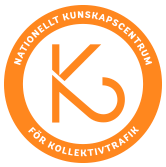The aim of this report is to contribute to develop knowledge about what the developments in positioning and smartphone technology bring to the table for the public transport sector. The overarching question in the report is: can new technology improve demandresponsive transport (DRT)? The cases analysed in this report were selected using a number of criteria to delimit the sample and distinguish the cases from “traditional” DRT and from ride-hailing services. A total of 35 different services were identified that met the criteria for what this report refers to as on-demand public transport. The identified cases are located in nine different countries and 23 different cities or regions, and includes services that have been or are operating in major urban areas, smaller towns, suburbs, semi-rural and rural areas. Nine services, most of which are subsidised by the public sector, have been analysed in more
detail. The comparison of the cases reveal differences and similarities concerning aspects such as vehicles and fleet sizes, and service partnerships. Different variants are also described
regarding operational policies of the services. This includes origin-destination policies, areas covered by the services, where to pick up and drop off passengers, operating hours, booking method, time of booking, payment and pricing. For the nine cases that are the focus of the report a comparison of patronage, productivity and production costs are also made. A main conclusion from this part of the study is that so far there is scant evidence that new technology improves the productivity of DRT. This suggests that new technology is no panacea for fixing the problems of DRT and the study
shows that thus far, at least, on-demand public transport hardly represents a transport revolution.
An international review of experiences from on-demand public transport services
Fredrik Pettersson K2 Working Paper 2019:5
Rapportkategori:
K2-rapporter
Forskningsinriktning:
